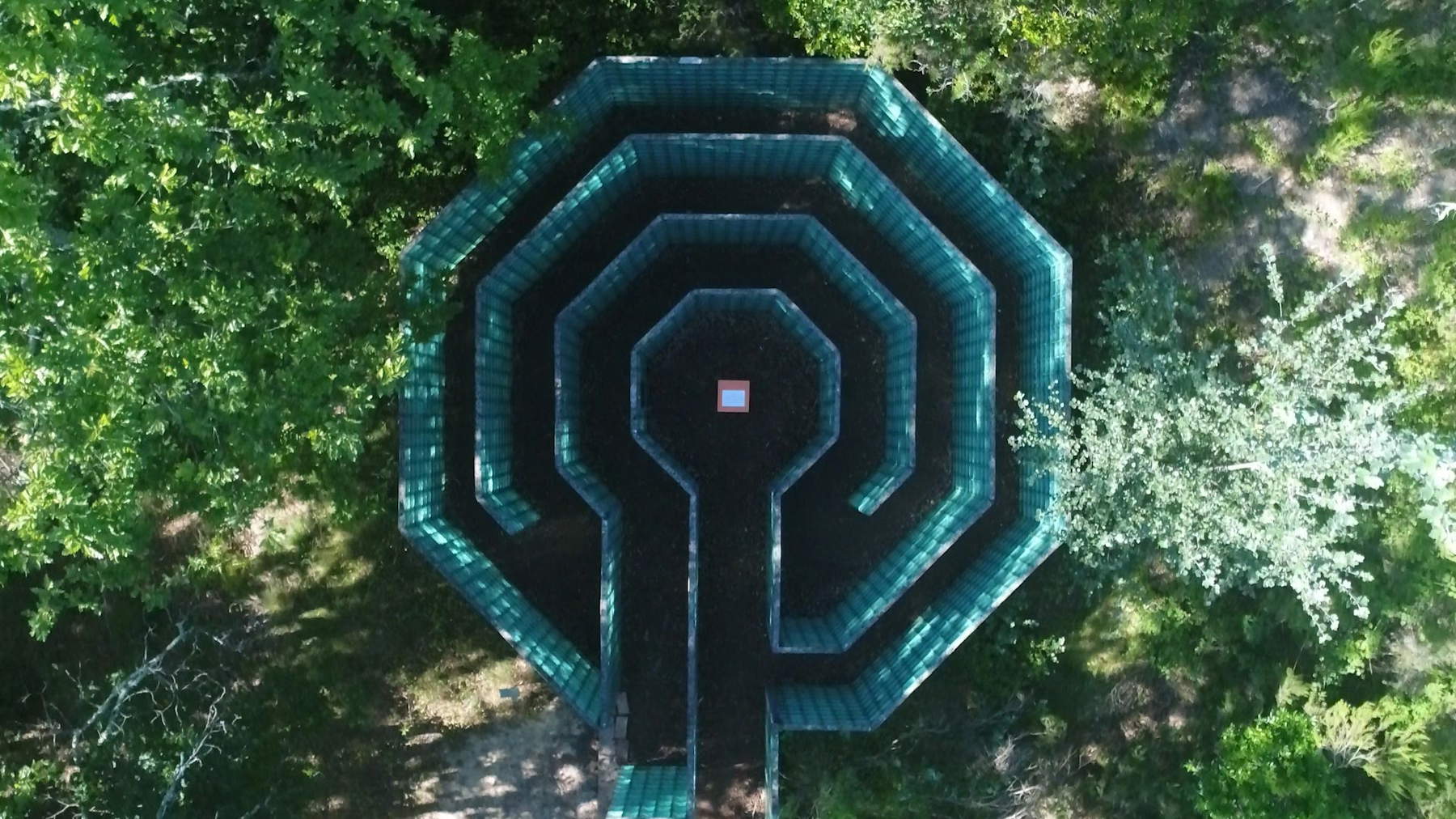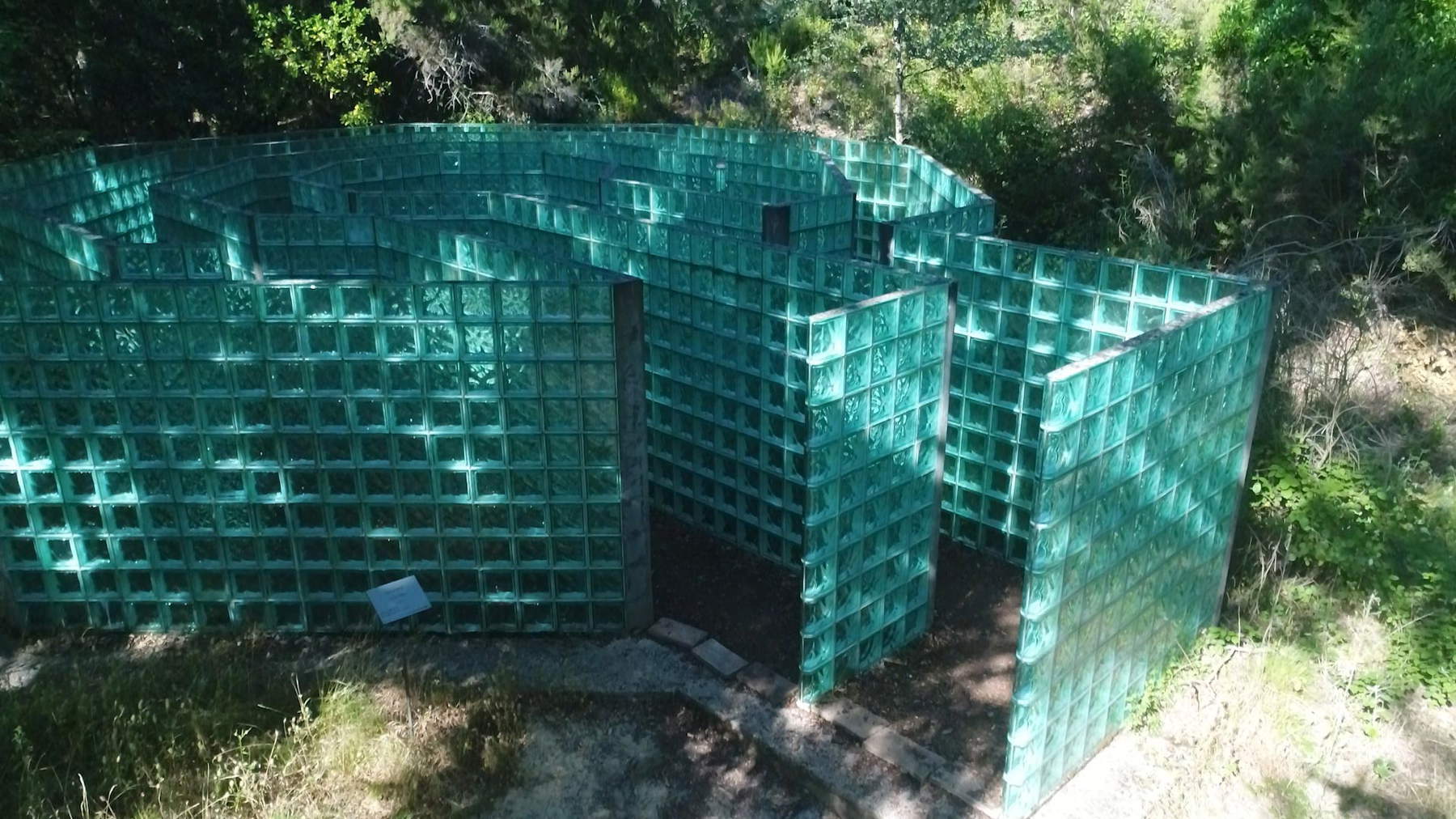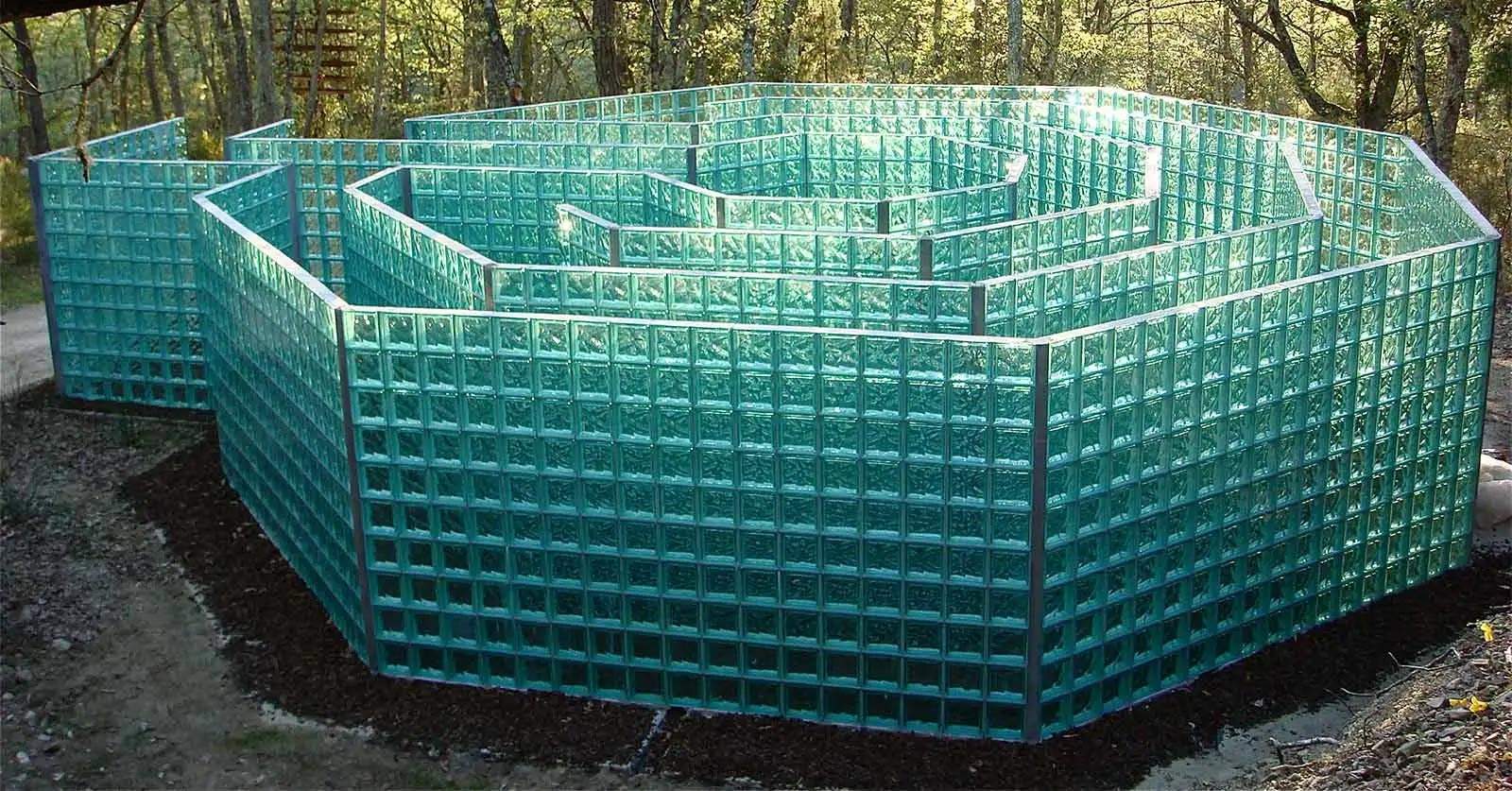Jeff Saward's glass labyrinth at Chianti Sculpture Park
Usually those who think of Tuscany think of the Renaissance, or the splendid medieval gold backgrounds that decorate the region’s most beautiful churches; someone else perhaps will be willing to go as far back as the19th century Macchiaioli, especially if the coastline is mentioned. In fact, Tuscany is also one of the Italian regions wherecontemporary art is most fervent: one need only think of museums such as Palazzo Strozzi in Florence or the Pecci Center in Prato, the galleries that form one of the most vibrant commercial fabrics in the country, the many artists who live and work here, the centers of production such as Carrara for marble or Pietrasanta for bronze, and, of course, the many artist’s parks and outdoor contemporary art collections. Among the latter, a special place belongs to the Chianti Sculpture Park: a collection of works by contemporary artists immersed in a forest on the outskirts of Siena, near the village of Pievasciata, born in 2004 from an idea of gallery owners Piero and Rosalba Giadrossi.
The Chianti Sculpture Park is certainly one of the most beloved and popular sites for people who visit these areas.We are at the beginning of the Sienese Chianti region, and the park hosts works by artists from all over the world (literally: all continents are represented) arranged on a seven-hectare plot of land. Assuming a survey of visitors, asking them which three works they remember best, perhaps one of the most recurring names would turn out to be the Labyrinth, also known as the Glass Labyrinth, the work of British artist Jeff Saward, who has devoted almost his entire life to labyrinths, a theme that has become a kind of “magnificent obsession” for him. His falling in love with labyrinths, as he put it, dates back to 1976, when he first began studying these particular structures, and as early as 1980 he founded the journal Caerdroia. The Journal of Mazes and Labyrinths, still published today and an indispensable source for knowing everything about labyrinths, a passion that has taken Saward everywhere around the world, from the shores of the Mediterranean to India, from America to even the Arctic ice. Needless to say, he has authored numerous books on the subject, and he is also the founder of the website Labyrinthos, a study center to which an archive of resources on the subject also belongs (including Saward’s extensive collection of photographs), and of the association “The Labyrinth Society.” Saward is thus often presented as an undisputed authority in this very unique field.



Following a decidedly fruitful tradition in Tuscany (from the labyrinths that the Etruscans engraved on their ceramics to those found in churches, such as the labyrinth in the Cathedral of Lucca, to the labyrinths of contemporary artists), Saward, who knows this part of Italy well, imagined his own labyrinth as a journey of self-discovery: in fact, the structure of his labyrinth, octagonal in shape with a three-circle plan, forces the visitor into an obligatory (or rather, almost obligatory: there is only one fork in the road at the beginning, and choosing the path to the right takes one back to one’s steps and forces one to choose the right way), about 80 meters long, which will lead him to the center of the maze, where he will find a bench and a mirror, as if to say “now you have arrived and reflect on yourself.” Therefore, even choosing the second path necessarily leads back to the first. It is thus a labyrinth in the strict sense, differing from a maze in that while the former has an obligatory path, the latter has several possible ways to reach the center or another exit (a labyrinth, on the other hand, always aims to reach the center): today the two words are often used as synonyms, but that is the difference (and it also recurs in English, where the terms labyrinth and maze are used to distinguish the two types). The labyrinth in the Chianti Sculpture Park is made of glass tiles, supplied by the company Seves, a world leader in the production of glass furniture, which give the maze its very special color, an emerald green whose intensity changes according to the light that strikes its walls,
It was the spring of 2007 when Saward’s Labyrinth was added to the collection of the Chianti Sculpture Park, which, like so many contemporary art parks, is enriched with a new work every year. And since then, visitors continue to complete, some more thoughtful and brooding and some more amused, the path designed by Jeff Saward, perhaps in search of themselves.
 |
| Jeff Saward's glass labyrinth at Chianti Sculpture Park |
Warning: the translation into English of the original Italian article was created using automatic tools. We undertake to review all articles, but we do not guarantee the total absence of inaccuracies in the translation due to the program. You can find the original by clicking on the ITA button. If you find any mistake,please contact us.



























